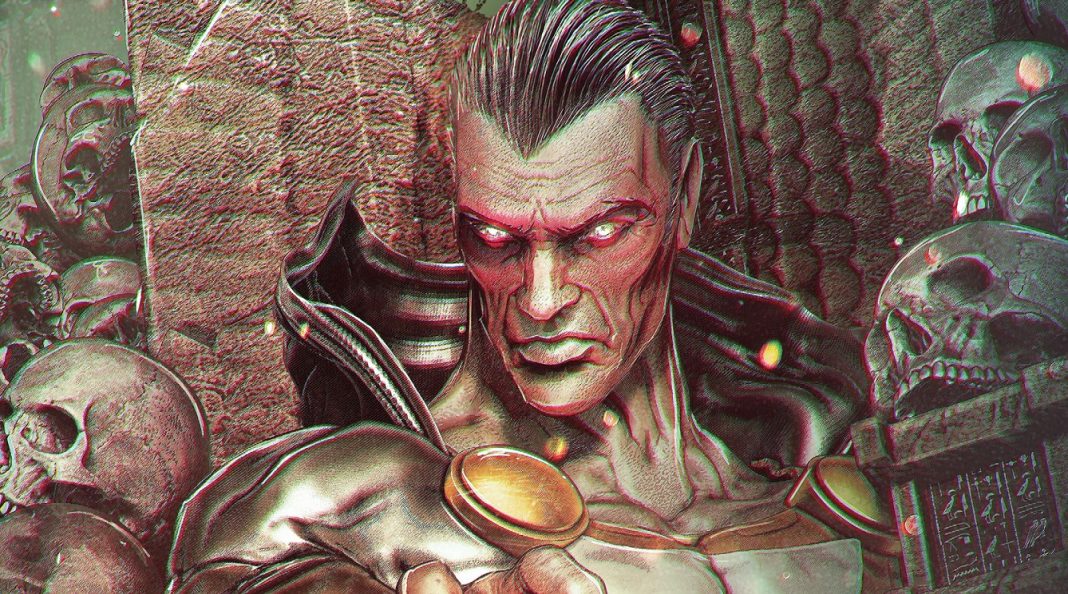NOTE: The following interview contains spoilers for Black Adam #12, out in stores and digitally today. You’ve been warned!
After a long absence of writing mainstream comics, Christopher Priest made a grand return back in 2016 with the Deathstroke ongoing series as part of the Rebirth initiative from DC Comics. Since then, Priest has brought his idiosyncratic writing style to numerous comic projects at DC, including the Justice League. When a Black Adam 12-issue limited series penned by Priest debuted last year, the synergy with the live-action Black Adam film was fairly obvious. While the superhero vehicle for Dwayne “The Rock” Johnson landed with a thud, Priest has brought new depth and nuance to the character in addition to incorporating his trademark political commentary.
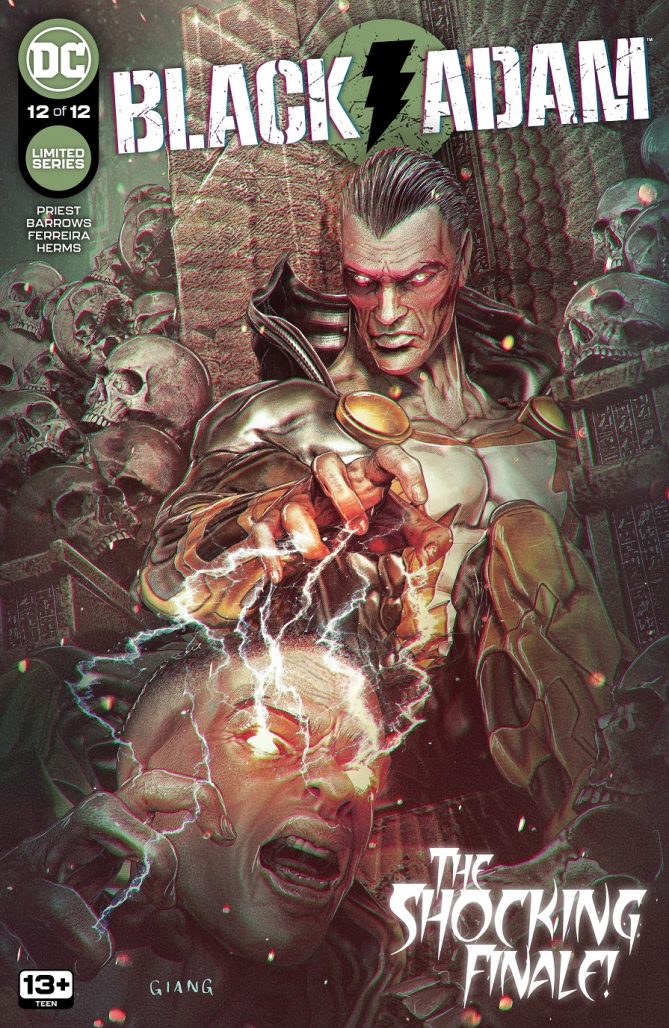
Taimur Dar: What I love about your comic projects is you are really great about adding new characters and concepts to the proverbial toy box that you or other creators can use. A great example is the character Dr. Villain [pronounced Will-hane] you introduced in the Steel book in the ‘90s and brought back in your Deathstroke run decades later.
Christopher Priest: [Laughs]
Dar: In this Black Adam limited series, you introduce new characters like Malik White, the Akkad, and even Shep. Any future plans from you or DC publishing?
Priest: I can’t speak for DC. Let me back up a second. I didn’t know this was a limited series until FedEx delivered the first issue and it said “1 of 12” on the cover. I created too much pasta for the dinner guest. I had created infrastructure that would sustain us for about 25 issues. That’s why there was so much new content. Black Adam had no infrastructure like Lois Lane, Jimmy Olsen, or Daily Planet. There really was nothing. There was a bit of history and previous incarnations where he had different friends and love interests. But Kahndaq was a generic platform. I couldn’t have Black Adam walking around in a void or fighting some monster every month. I had to create all this stuff. What happens to them is out of my hands. It’s up to DC if they want to do a new Black Adam series or if another writer incorporates these characters into future works.
On the one hand it’s kind of cool if any of my characters grow legs. I’m glad you remember Dr. Villain from Steel. I don’t think anybody pays attention to Dr. Villain but me. I brought him back in Deathstroke because I just love him so much. Unfortunately, no one can draw him but Denys Cowan. Carlo Pagulayan is a wonderful artist and he’s drawing my Superman: Lost book. He drew Deathstroke and he’s one of my favorite artists. But he couldn’t get Dr. Villain right. I called up Denys and asked, “Why can’t anybody draw this guy?” He couldn’t understand either. Denys Cowan had so defined this character.
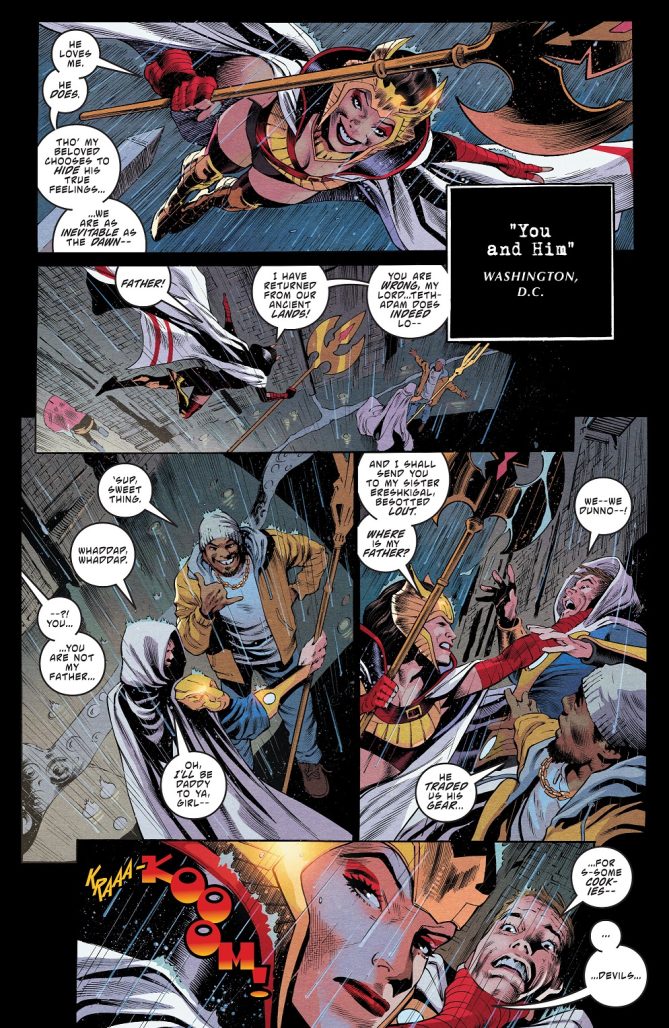
Priest: What happens is writers and artists will tend to learn each other and it takes time. Unfortunately, the business is so cutthroat right now in terms of margins for the publishers and profit and loss. [Because] paper and shipping costs [are] going through the roof, the luxury of time is not there. So that’s why we ended up with the 12 issues instead of taking a chance with an ongoing where the artist and I would have time to learn from each other. Rafa had been drawing Black Adam in the Justice League so he hit the ground running and knows the character inside and out. But he had to learn me and [the character] Malik who was a real challenge to everyone who drew him including Eddy and an interim artist named Jose Luis. It was me pulling my hair out because they just didn’t understand the culture and character. But Rafa was a very quick study and certainly by issue #5 he had everybody dialed in.
Unfortunately for us, Rafa had to be recruited to help out with Dark Crisis and he was pulled from Black Adam to keep that book on track. When Eddy got here, he had to start all over again. So he started drawing the book and he wasn’t drawing Black Adam. He was drawing Shazam in a black suit. So it took him a couple of issues to dial in Black Adam and get that he is this dark villain. Once you realize the kinds of things that the artist likes to draw and responds to, you write more of those things. The things that the artist doesn’t do well, I write less.
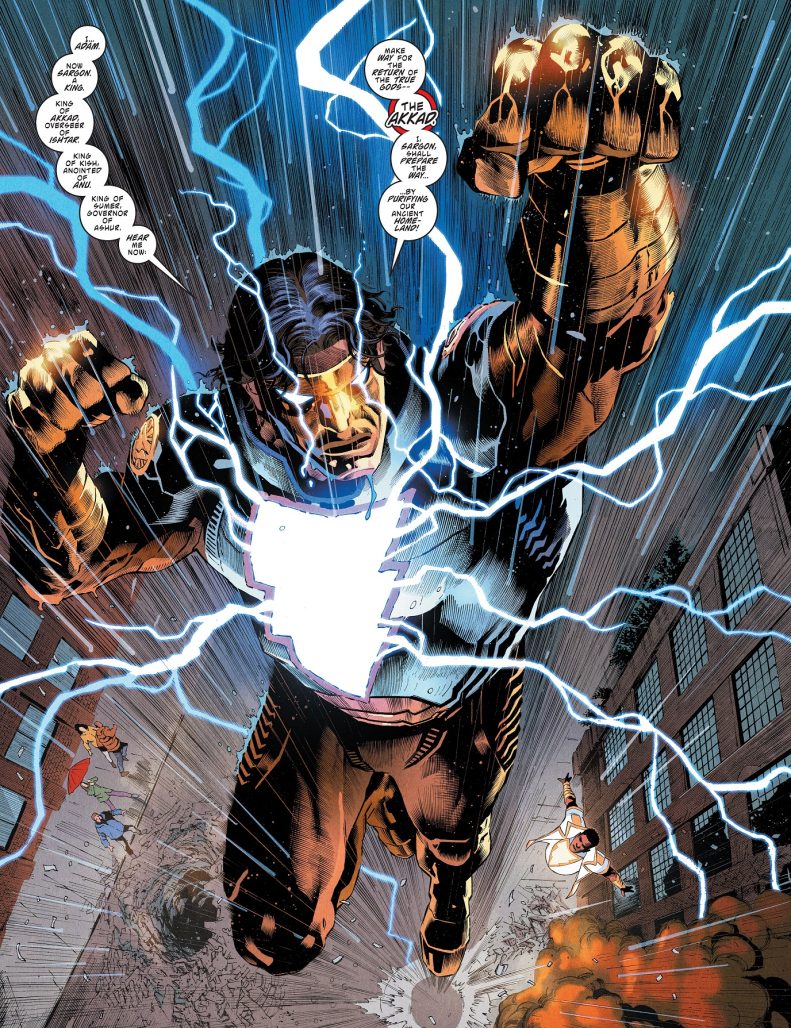
Priest: At least at first, I didn’t realize I was working on a finite series so that was a surprise. Because I thought we were doing an ongoing book, [I felt] we should reflect Dark Crisis in our book. We actually caught up to Dark Crisis and reprinted pages from Justice League #75 which caused an enormous problem at DC. Bookkeeping and accounting and the bean counters were all up in arms. I couldn’t believe what a ruckus it caused to reprint two pages. That’s neither here nor there. I thought being a good guy and a team player [we should] try not to ignore Dark Crisis but to reflect it in our book to show what was going on with Bolt and Shep and all the other characters. It’s easier to work on a limited capacity that exists in its own reality and not have to deal with any of that. I don’t know if it’s as much fun for the fans. I think the fans want to see a cohesive universe. And they don’t want it so fractured that we’re forcing you to read all those other books but it’s nice to know that the characters are aware of each other and the universe that they share.
Dar: I’d be remiss if we didn’t discuss the major status quote shift in Black Adam #12 with Theo-Adam separating from Black Adam. Was this ending proposed by you or something already baked in by DC editorial?
Priest: I had to talk them into it. I don’t think it matters much to DC because DC never bothered much with Theo. Prior to this book, he was always Black Adam and powered up. We almost never saw him powered down for any reason. Actually, I may have to credit Joshua [Williamson] for that. He had Black Adam use the Shazam transformation thing to get out of a jam. I wondered why he didn’t do that more often. As far as the series finale, that came organically out of the work we were doing. I hadn’t had an ending for the series in mind when I began work on the series because I thought it was ongoing. Once I realized we needed some button on this thing, I thought this would be an interesting bit of business that leaves the door open for a sequel if DC wants it. Or they can just ignore it because they weren’t dealing with Theo anyway and it wouldn’t affect much what they were doing.
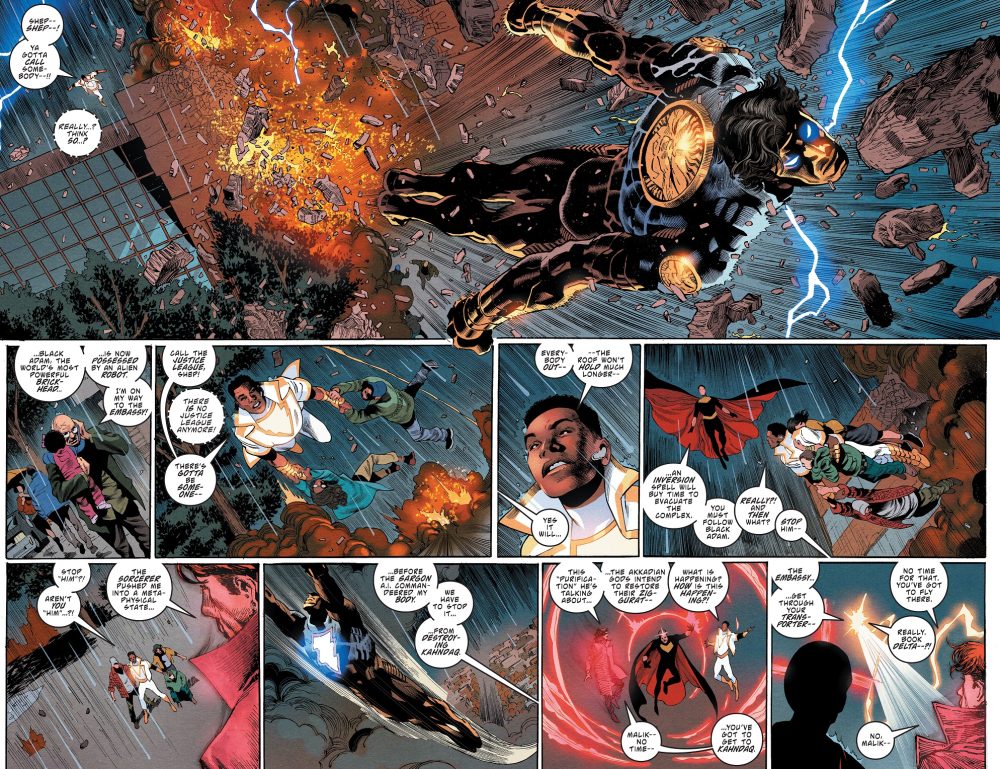
Priest: It opens a lot of doors for storytelling if DC or the writer wants it. Black Adam wasn’t a particularly good guy with his humanity. Now having been stripped of his humanity, what are the implications for that and the larger DC Universe? In my opinion, I don’t see this version of Black Adam without his humanity in the Justice League. I see him being even more insular and selfish. There is no way this guy is going to give into the democracy movement in Kahndaq. Theo meanwhile is managing a Home Depot in Maryland and living his life and loving it. In the back of his mind, he’s seeing Black Adam become darker and the consequences of that. He realizes he’s the only one who can put a stop to it. The conflict is does he take the evil back onto to himself in order to serve the greater good?
Just to diverge and completely end my career at Marvel, I’m sure they’re doing great things with Thor. But taking away Don Blake, I don’t get that. The whole idea of this incredibly powerful person having this incredible vulnerable other side is just a wonderful idea. When Geoff Johns did his revision of Black Adam, he had Black Adam badly damaged and Theo used a cane. I liked that mortality. The resonance with Thor is not accidental. I wanted Black Adam to be the obnoxious Thor of the DC Universe and created the Akkad as his Asgardian pantheon. Had we had our Year Two, we would see Black Adam going back and forth between our version of Asgard and dealing with these gods. It wasn’t an accident. It was an homage if not a ripoff of the Thor concept.
Dar: Finally, aside from your current Superman: Lost miniseries, any other future comic projects you can tease?
Priest: There are three things that are in the works. One is partially drawn and the other two are at the “Please, please, let me do that” stage. Meanwhile, I’m working on Vampirella and her gals and pals over at Dynamite. I have a Heavy Metal series that’s being held up and a few other things in the pipeline. I’m keeping myself busy mostly with things that I can’t talk about including some Marvel things.
Black Adam #12 is available now in stores and digitally.


